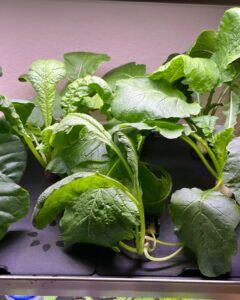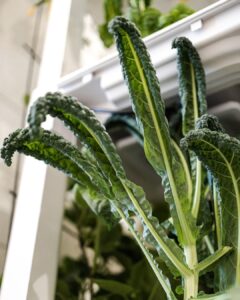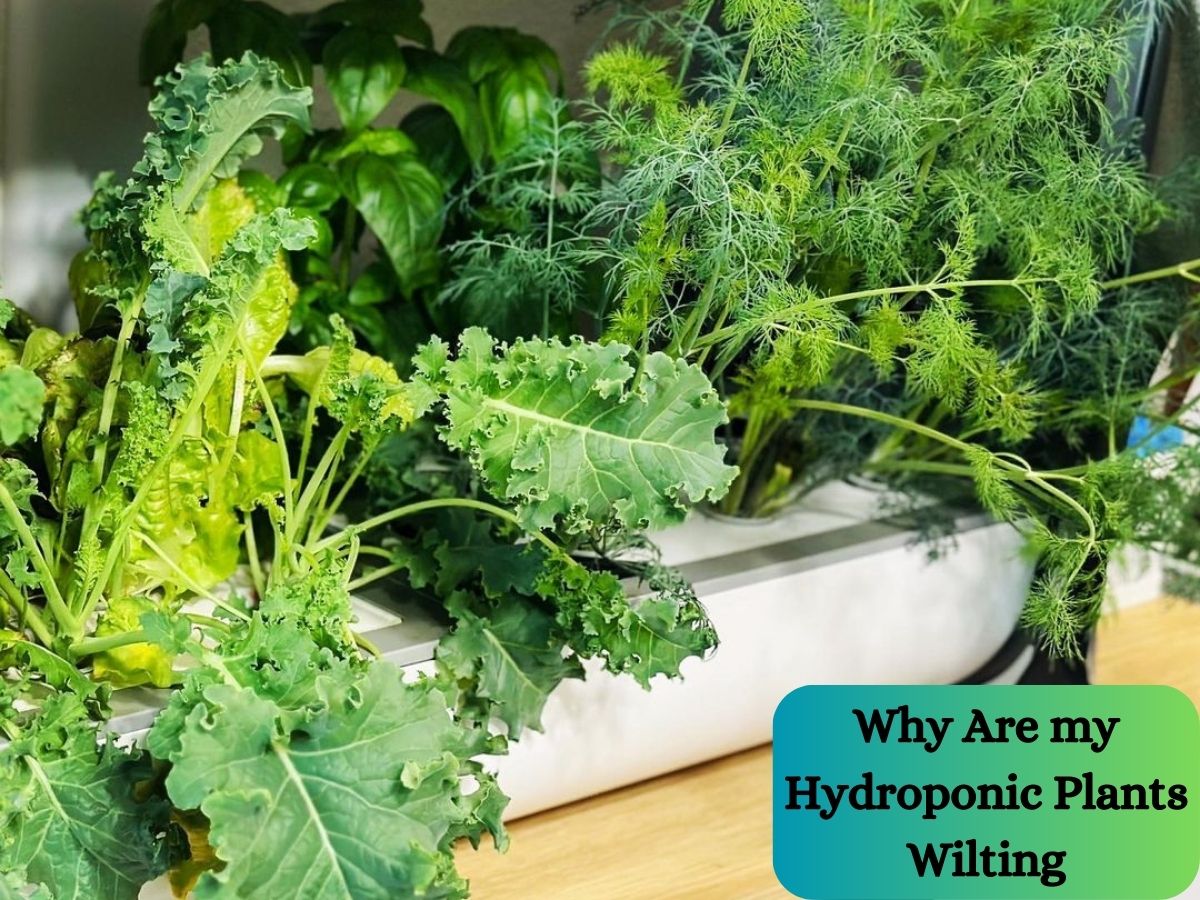Welcome to our blog, where we unravel the mysteries of hydroponic gardening Today, we’re addressing a common concern that’s been bothering many indoor growers lately: “Why are my hydroponic plants wilting?” It’s disheartening to see your once-thriving green beauties looking sad and droopy, but fear not, we’ve got your back.
Hydroponics, the art of growing plants without soil, offers a host of benefits like faster growth and higher yields. But even in this controlled environment, plants can sometimes throw us a curveball and start wilting. So, what’s causing this distressing dilemma?
In a nutshell, wilting in hydroponic plants is often linked to one crucial factor: water imbalance. Yes, you heard that right. As soil-less gardening relies entirely on nutrient-rich water solutions, any slight deviation in the delicate balance of water, nutrients, and oxygen can leave your plants feeling parched.
We’ll delve deeper into the nitty-gritty in our following blog posts, exploring common culprits like root issues, nutrient deficiencies, and even environmental factors. So stick around, as we equip you with the knowledge and know-how to revive those wilting wonders into their vibrant, green glory
Factors that may cause wilting in hydroponic plants.
Wilting in hydroponic plants can be a worrisome issue, but understanding the underlying factors can help you address the problem effectively. Here are some common culprits that may cause wilting in your soil-less garden:
- Root Problems: Unhealthy or damaged roots can disrupt the plant’s ability to absorb water and nutrients, leading to wilting. Root rot, caused by overwatering or poor drainage, is a prevalent issue in hydroponics.
- Watering Issues: Inconsistent watering practices, either overwatering or underwatering, can throw off the delicate water-nutrient balance, leaving plants thirsty or suffocated.
- Nutrient Imbalance: Hydroponic systems rely on nutrient solutions to nourish plants. A lack of essential nutrients or an incorrect balance can hinder proper growth and cause wilting.
- Oxygen Deprivation: Healthy root systems require oxygen, and if they don’t get enough due to waterlogging or inadequate aeration, the plants may show signs of wilting.
- Temperature Extremes: Extreme temperatures, whether too hot or too cold, can stress hydroponic plants, leading to wilting.
- Pests and Diseases: Just like traditional gardening, hydroponic setups are not immune to pests and diseases. Infections or infestations can weaken plants and contribute to wilting.
- Environmental Stress: Factors like high humidity, low light levels, or abrupt changes in environmental conditions can stress plants and cause wilting.
- Transplant Shock: When moving seedlings or young plants to a hydroponic system, they may experience transplant shock, leading to temporary wilting.
By keeping a close eye on these potential factors and taking proactive measures, you can create a healthier and thriving hydroponic garden, ensuring your plants stand tall and vibrant, free from the clutches of wilting.

Signs of wilting in hydroponic plants
Recognizing the early signs of wilting in hydroponic plants is crucial for addressing the issue promptly and nursing your plants back to health. Here are some telltale signs to watch out for:
- Drooping Leaves: One of the most apparent signs of wilting is when the once perky and upright leaves of your plants start to droop and appear limp.
- Loss of Turgidity: Turgidity refers to the state of cell rigidity when the plant cells are filled with water. When a plant wilts, it loses turgidity, and its leaves and stems may feel soft and flaccid.
- Discoloration: Wilting can cause changes in leaf color. You might notice yellowing or browning of the leaves, indicating that the plant is stressed and not receiving sufficient nutrients or water.
- Curled or Wrinkled Leaves: In some cases, the leaves may appear curled or wrinkled, further highlighting the lack of water and nutrients reaching the plant cells.
- Stunted Growth: Wilting plants often exhibit slow or stunted growth. If you observe your hydroponic plants not growing as expected, it could be a sign of underlying wilting issues.
- Dry Growing Medium: Check the growing medium in your hydroponic setup. If it feels excessively dry, the lack of moisture might be causing wilting.
- Wilting During the Day: Sometimes, wilting may be more noticeable during the hottest part of the day when the plants lose more water through transpiration.
- Root Problems: While not directly visible, root issues are a common cause of wilting. If you observe brown, mushy, or slimy roots, it indicates potential problems affecting the plant’s water and nutrient uptake.
Regular monitoring and swift action are vital to prevent wilting from becoming a severe problem for your hydroponic plants. Identifying the signs early on will help you make the necessary adjustments to your hydroponic system and provide the care needed for your plants to thrive.
How to cure hydroponic plants wilting
Addressing wilting in hydroponic plants requires a systematic approach to identify and rectify the underlying issues. Let’s delve into the detailed steps to cure each cause of wilting:
Root Problems:
- Diagnosis: Check the roots for signs of rot or damage. Healthy roots should be white or light-colored, firm, and well-branched.
- Cure: If you notice root rot, remove affected roots carefully with sanitized scissors. Improve aeration and drainage in the system to prevent future rot. Consider adding beneficial bacteria or beneficial fungi to promote root health.
Watering Issues:
- Diagnosis: Ensure you have a consistent watering schedule. Overwatering can lead to waterlogged roots, while underwatering can cause dehydration.
- Cure: Adjust your watering frequency based on the specific needs of your plants and environmental conditions. Consider using a timer or automated system to maintain a regular watering routine.
Nutrient Imbalance:
- Diagnosis: Test the nutrient solution to check for any deficiencies or imbalances. Common deficiencies include nitrogen, phosphorus, potassium, calcium, and magnesium.
- Cure: Adjust the nutrient solution by adding the appropriate hydroponic nutrients to correct any deficiencies. Follow the manufacturer’s instructions and monitor your plants’ response.
Oxygen Deprivation:
- Diagnosis: Poor aeration and waterlogged conditions can lead to low oxygen levels in the root zone.
- Cure: Improve the oxygenation of the nutrient solution by using air stones or air pumps to create bubbles. Ensure proper drainage to prevent waterlogging.
Temperature Extremes:
- Diagnosis: Extreme temperatures can stress hydroponic plants, leading to wilting.
- Cure: Maintain optimal temperature ranges for your specific plant species. Use fans or cooling systems to regulate high temperatures and heaters to prevent cold stress.
Pests and Diseases:
- Diagnosis: Inspect your plants regularly for signs of pests or diseases, such as holes, discoloration, or webs.
- Cure: If pests are present, use natural or organic remedies or introduce beneficial insects to control them. For diseases, remove infected plant parts, and consider using disease-resistant varieties.
Environmental Stress:
- Diagnosis: High humidity, low light levels, or abrupt changes in environmental conditions can stress plants and cause wilting.
- Cure: Ensure the environmental conditions are suitable for your plants’ requirements. Maintain proper humidity, and lighting, and acclimatize plants gradually to changes in conditions.
Transplant Shock:
- Cure: Minimize transplant shock by handling plants gently during the transition to the hydroponic system. Provide adequate moisture and nutrients to support recovery.
pH Imbalance:
- Diagnosis: Check the pH level of your nutrient solution. Fluctuations in pH can affect nutrient availability, leading to wilting.
- Cure: Adjust the pH to the appropriate range for your plants (typically between 5.5 to 6.5 for most hydroponic crops) using pH-up or pH-down solutions.
Lighting Issues:
- Diagnosis: Insufficient or excessive light can stress plants and cause wilting.
- Cure: Provide the correct amount and intensity of light for your specific plants. Consider using full-spectrum LED grow lights or other suitable lighting options.
Incorrect Plant Spacing:
- Diagnosis: Overcrowding in hydroponic systems can lead to competition for resources and inadequate air circulation.
- Cure: Space out your plants appropriately to allow each one enough room to grow and receive proper light and nutrients.
Nutrient Solution Temperature:
- Diagnosis: The temperature of the nutrient solution affects the plants’ ability to absorb nutrients and water.
- Cure: Maintain the nutrient solution temperature within the recommended range for your plant species (typically between 65°F to 75°F or 18°C to 24°C).
Inadequate Pollination:
- Diagnosis: Some hydroponic plants require pollination for fruit set and proper growth. In the absence of pollinators, wilting may occur.
- Cure: For plants that require pollination, perform hand pollination by transferring pollen between flowers using a soft brush or cotton swab.
Improper Harvesting:
- Diagnosis: Harvesting plants incorrectly can lead to stress and wilting.
- Cure: Follow proper harvesting techniques, cutting or picking mature plant parts without damaging the rest of the plant.
Mineral Deposits and Clogging:
- Diagnosis: Mineral deposits and clogs in the hydroponic system can disrupt nutrient delivery.
- Cure: Regularly clean and maintain your hydroponic system, flushing it to prevent mineral buildup and clogging.
Regularly monitor your hydroponic plants, be attentive to their needs, and implement the necessary adjustments promptly. By addressing the specific causes of wilting, you can revive your plants and ensure they flourish in your hydroponic garden.

Tips to prevent wilting in hydroponic plants
Preventing wilting in hydroponic plants is essential to maintain healthy growth and high yields. Here are some valuable tips to help you keep your hydroponic garden thriving:
- Monitor Watering: Establish a consistent watering schedule based on your plant’s needs and environmental conditions. Avoid both overwatering and underwatering, as they can disrupt the water-nutrient balance.
- Ensure Proper Drainage: Implement a well-designed hydroponic system with adequate drainage to prevent waterlogging and oxygen deprivation in the root zone.
- Maintain Nutrient Balance: Regularly test and adjust the nutrient solution to ensure the proper balance of essential nutrients for your plants. Follow the manufacturer’s guidelines for nutrient mixing and feeding.
- Optimize pH Levels: Monitor and maintain the pH of the nutrient solution within the optimal range for your plant species. Adjust the pH using pH-up or pH-down solutions as needed.
- Provide Sufficient Oxygen: Enhance aeration in the root zone using air stones or air pumps. Proper oxygenation promotes healthy root growth and nutrient uptake.
- Control Temperature and Humidity: Keep the growing environment at the ideal temperature and humidity range suitable for your plants. Use fans or ventilation to prevent excessive heat and humidity stress.
- Proper Lighting: Ensure your plants receive the appropriate amount and quality of light for their growth stage. Utilize full-spectrum LED grow lights or other suitable lighting options.
- Space Plants Appropriately: Avoid overcrowding in the hydroponic system, as it can lead to competition for resources and hinder proper air circulation.
- Practice Good Hygiene: Regularly clean and maintain your hydroponic system to prevent the buildup of mineral deposits, algae, and pathogens.
- Monitor for Pests and Diseases: Conduct regular inspections to detect and address pest or disease issues early on. Implement integrated pest management techniques and use disease-resistant varieties when possible.
- Transplant Carefully: When transplanting seedlings or young plants into the hydroponic system, handle them gently to minimize transplant shock. Provide adequate moisture and nutrients during the transition period.
- Use High-Quality Seeds and Seedlings: Start with healthy and disease-free seeds or seedlings to ensure a strong foundation for your hydroponic plants.
- Train and Support Vining Plants: Properly support climbing or vining plants to prevent wilting caused by the weight of their growth.
By implementing these preventive measures, you can create a stable and optimized environment for your hydroponic plants, reducing the risk of wilting and ensuring they thrive throughout their growth cycle.
Why are my hydroponic plants wilting FAQs?
How often should I water my hydroponic plants?
The frequency of watering in hydroponic systems can vary depending on several factors, including the type of plants, growth stage, ambient temperature, humidity, and the hydroponic setup. As a general guideline, it’s essential to maintain a consistent watering schedule to prevent both overwatering and underwatering.
Check the moisture level of the growing medium regularly, and water when it starts to feel slightly dry to the touch. You can also monitor the weight of your plant containers; when they feel lighter than usual, it’s a sign that the plants might need watering.
Remember that different plant species have varying water requirements, so it’s crucial to research the specific needs of your plants and adjust the watering frequency accordingly.
Can over-fertilization cause wilting in hydroponic plants?
Yes, over-fertilization can lead to wilting in hydroponic plants. When the nutrient solution is too concentrated or when fertilizers are applied excessively, it can create an imbalance in nutrient uptake and negatively impact the plant’s root system. The excess salts in the nutrient solution can cause water to move out of the plant’s roots, leading to dehydration and wilting. Here is how to clean salt buildup in your hydroponic system.
To prevent over-fertilization, regularly monitor the electrical conductivity (EC) or total dissolved solids (TDS) of the nutrient solution. Follow the recommended dosages provided by the fertilizer manufacturer and adjust the nutrient concentration based on the plant’s growth stage and any signs of nutrient deficiencies or excesses.
Can wilting be a sign of too much light exposure?
Yes, wilting can sometimes be a sign of too much light exposure. When plants receive excessive light, they can lose water through transpiration at a faster rate than their roots can absorb. This can lead to dehydration and wilting.
To prevent wilting due to excessive light exposure, ensure your hydroponic setup provides the appropriate amount of light for your specific plant species and growth stage. Adjust the distance between the light source and the plants, use shades or diffusers, or reduce the light duration if necessary.
What is the ideal temperature range for hydroponic plants?
The ideal temperature range for hydroponic plants can vary depending on the type of plants being grown. However, in general, most hydroponic plants thrive within a temperature range of 65°F to 75°F (18°C to 24°C) during the day and around 10°F (5°C) cooler at night.
It’s essential to monitor the temperature closely, as some plant species might have specific temperature preferences. High temperatures can lead to heat stress, increased water demand, and wilting, while colder temperatures can slow down growth and affect nutrient absorption. Use fans, ventilation, or heaters as needed to maintain a suitable and stable temperature for your hydroponic garden.
Conclusion
Wilting is a common problem that can affect hydroponic plants. Various factors, including lack of water or nutrients, overwatering, root problems, poor air circulation, environmental factors, pest or disease infestation, and temperature fluctuations can cause it.
Preventing wilting in hydroponic plants requires careful attention to various factors that can impact their health and growth. Maintaining a well-balanced watering schedule, proper nutrient levels and adequate oxygenation are key to supporting robust root systems and vibrant foliage.
Over-fertilization and excessive light exposure should be avoided, as they can lead to stress and wilting. Regular monitoring for pests, diseases, and root rot enables early detection and swift intervention.
Creating an optimal environment with the right temperature and humidity range ensures your hydroponic plants flourish. By following these guidelines and tailoring care to the specific needs of your plants, you can enjoy a thriving and productive hydroponic garden, free from the worries of wilting. Happy gardening!
